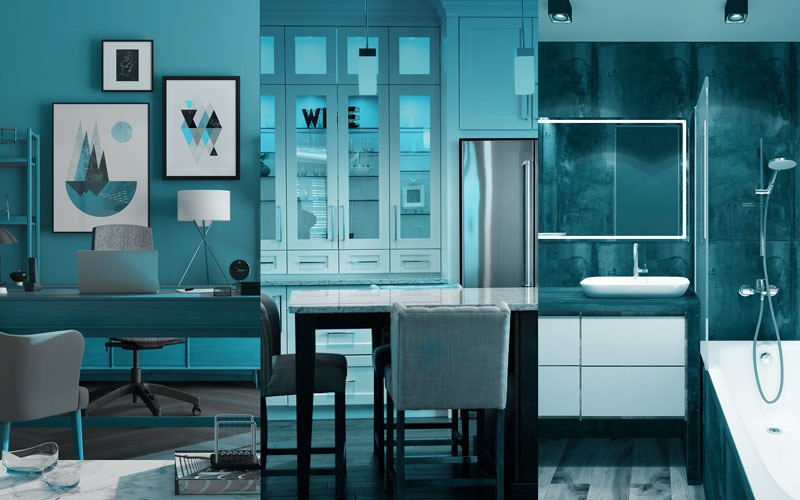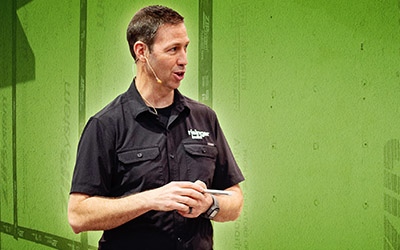Industry Trends
Marketing Insights
The events of 2020 have compelled quite the remodel. The COVID-19 pandemic, in particular, is still transforming how we live, work and play, where we spend our money and even what we hold most dear. But we’re also beginning to find our way in a distinctly new normal.
Let’s get one thing straight: Coronavirus concerns aren’t going anywhere soon. Even as we all return to working, shopping and seeing friends and family, most of us are at least somewhat nervous about staying well, paying the bills or getting back to some semblance of life as we once knew it (Ipsos).
The home and building category is still working to overcome adversity, yet the tides are beginning to turn. Pending home sales are surging (CNBC), while dramatic shifts toward wellness, safety and functionality are creating new business for manufacturers, contractors and others.
What’s on everyone’s minds right now? What challenges still exist for the industry? Where are the greatest opportunities? How can brands best position themselves for success? For the answers, we talked with members of The Cul-de-Sac, Wray Ward’s advisory panel dedicated to the home and building category.
What is the single biggest challenge that you think the home and building category is facing?
“Disrupted manufacturing for many companies. The single biggest challenge may be the supply chain itself — and the ability to ramp production back up in order to keep pace with the surging real estate market in suburban areas and quarantine-inspired renovations nationwide.” –Beth Brenner, Publisher, Galerie
“Demand combined with supply chain. DIY activity and housing starts are extremely strong, and contractor activity is starting to rebound. Given the supply chain disruption that has occurred and is likely to continue, (we’re seeing) high demand and availability issues.” –Grant Farnsworth, Director, Business Development, The Farnsworth Group
“Product backlogs and allocations are a big problem across many categories including HVAC, lumber and plumbing.” –Paul Tourbaf, Executive Vice President, Hanley Wood
“Determining how to connect with customers, as large-scale events are in question. Even if trade shows move forward, exhibitors need to determine whether customers are comfortable enough to travel and spend time with large groups from across the country and around the globe. Brands are struggling to reinvent the in-person experience of a trade show or market week and introduce new collections via a digital platform in a meaningful way that supports sales.” –Beth McDonough, Co-Founder and Principal, Heron Brand Design
“Adapting to the ever-changing marketplace. The flooring, home furnishings and building categories still operate in a vacuum. They are not owning their sales channel communication or pushing their points of difference. (Instead,) they rely on the retailer to sell and promote their products. Most of the time, that retailer will use price promotions to do it, cheapening the process.” –Kelly Peterson, Executive Director, Sales Development, Hearst
“Product deliverables. With consumers living in their homes like never before, they’re reimagining their homes for what they need them to be today … and that means shopping. Consumers need immediate gratification, and they want new products to be delivered immediately.” –Kate Kelly Smith, EVP and Managing Director, Luxe Interiors + Design
What is the biggest opportunity for brands right now?
“Pent-up demand for renovating. We’ve spent nearly six months at home, saving money not spent on travel, clothing or eating out. We have long envisioned projects to make our homes more livable and are now more motivated than ever to pull the trigger.” –Beth Brenner, Publisher, Galerie
“Figuring out your point of difference, not what you sell. This can be hard for a brand, but once you get it, work the communication from there. Own how you can make consumers feel safe via their home, the products they are putting into the home and if those products will last.” –Kelly Peterson, Executive Director, Sales Development, Hearst
“Engaging and meaningful experiences for customers to interact with products and sales teams (beyond the standard Zoom call or video presentation). (Brands that do this) will set the bar for how the market moves forward in lieu of — or as a complement to — in-person events.” –Beth McDonough, Co-Founder and Principal, Heron Brand Design
“Home offices and healthy homes. While this pandemic will end at some point, the working-from-home trend will likely continue. I hear people complain about aspects of their home work environment and the physical limitations of their home offices — not just dealing with a moody teenager or a 4-year-old’s tantrum mid-Zoom. Builders, design pros and product manufacturers can use these pain points to inspire new ideas. Borrow from the best elements of traditional workplaces — think kitchenettes in extra bedrooms used as office spaces — or at least a barista bar with a sink area, beverage center and plumbed coffee machine. We need livable, organized work spaces in order to reach peak productivity. Perhaps employers might offer new products to improve an employee’s home office or even finance a home office remodel.
“Making buyers feel safer in their homes. A recent RICKI survey found more than one in three American homeowners postponed a home improvement project due to coronavirus concerns, and four out of five say they’re concerned about germs. They express the most interest in homes with germ-resistant surfaces, especially kitchen countertops, as well as more fresh air and improved ventilation.” –Erin Gallagher, Chief of Insights, RICKI
“Wellness — it’s top of mind for millions of Americans. The notion of wellness in the home is nothing new, but this public health crisis is almost certain to reinforce the concept of ‘cocooning’ — the notion that lifestyles will be increasingly reconfigured around homes that are designed as safe and healthy havens from a hostile, threatening world. And a burgeoning universe of design opportunities is emerging.
“According to the American Institute of Architects, the coronavirus pandemic has already spawned a spike in requests for products and features related to wellness. Remodeling contractors are reporting a decided uptick in closing rates for projects that address health concerns, according to the Home Improvement Research Institute.
“The design firms that seize the growing range of opportunities by focusing on in-demand specialties like wellness are far more likely than others to succeed. It’s imperative that kitchen and bath design pros increase both their expertise and their qualifications when it comes to wellness design and that they spend time researching the plethora of wellness-related products, concepts and construction methods. It’s equally important that design firms make their wellness expertise an essential component of their company’s future marketing strategy.” –Eliot Sefrin, Publisher Emeritus, Kitchen & Bath Design News
What can brands do to come out of 2020 even stronger?
“Beef up your marketing efforts, both locally and nationally. Brand names matter: Consumers care about brands and will ask for them by name when shopping for their homes.” –Beth Brenner, Publisher, Galerie
“Understand how and why your customers are making decisions in this new market. Gone are the days of relying on brand or supplier loyalty. Pricing, which hasn’t been a top priority for many years, is becoming a factor. Availability is becoming a key driver of supplier and product selection. Dig deep into your category, your brand and your customer to understand not only what is happening in your space, but why. This will set the foundation for product development, marketing, sales, distribution and brand initiatives for the next few years.” –Grant Farnsworth, Director, Business Development, The Farnsworth Group
“Don’t go dark! Keep your brand top of mind. Consumer behavior is tricky, and you have to remain front-row-center in the marketplace to succeed.” –Kate Kelly Smith, EVP and Managing Director, Luxe Interiors + Design
“Don’t sit on the sidelines. The pandemic will eventually end, and building pros still have product needs. Even if a pro isn’t a current customer, you should stay in front of them, as they will be a buyer tomorrow.” –Paul Tourbaf, Executive Vice President, Hanley Wood
“Be where your customers are when they need you. More than 60% of residential contractors have tried a new building product brand in the past two to three months due to lack of availability and channel shifts. Higher-priced products are gaining share if they’re the only game in town. Lesser-used brands are winning if they’re the supplier’s only option.” –Grant Farnsworth, Director, Business Development, The Farnsworth Group
“Think of these challenges as opportunities to reinvent and reconnect with your audiences. Business is not going to return to the way we did it pre-COVID-19. If your brand doesn’t start looking for ways to evolve, you’re going to be left behind. Don’t be afraid to experiment with new strategies and approaches. They aren’t all going to work right out of the gate, but they will provide valuable lessons that will help your business thrive in the new environment and will help you stand out as an industry leader.” –Beth McDonough, Co-Founder and Principal, Heron Brand Design
“Evaluate everything. Create a new strategy, and identify new opportunities for business growth. Continue to market yourself so your brand remains top of mind and prominent for consumers.” –Kate Kelly Smith, EVP and Managing Director, Luxe Interiors + Design
Are you planning for life without large trade shows? Adjusting to a changing marketplace? Reinventing the customer experience? If you need help positioning your brand for success, email me.


